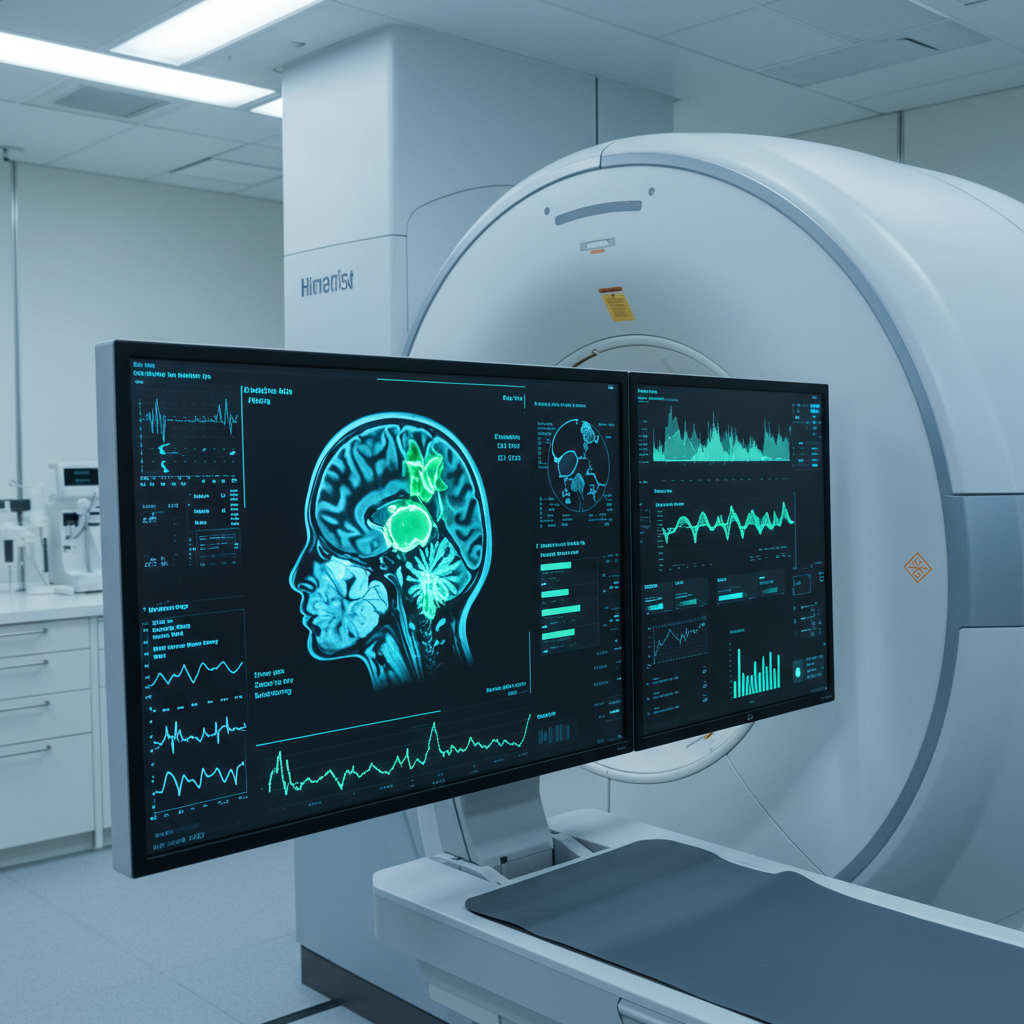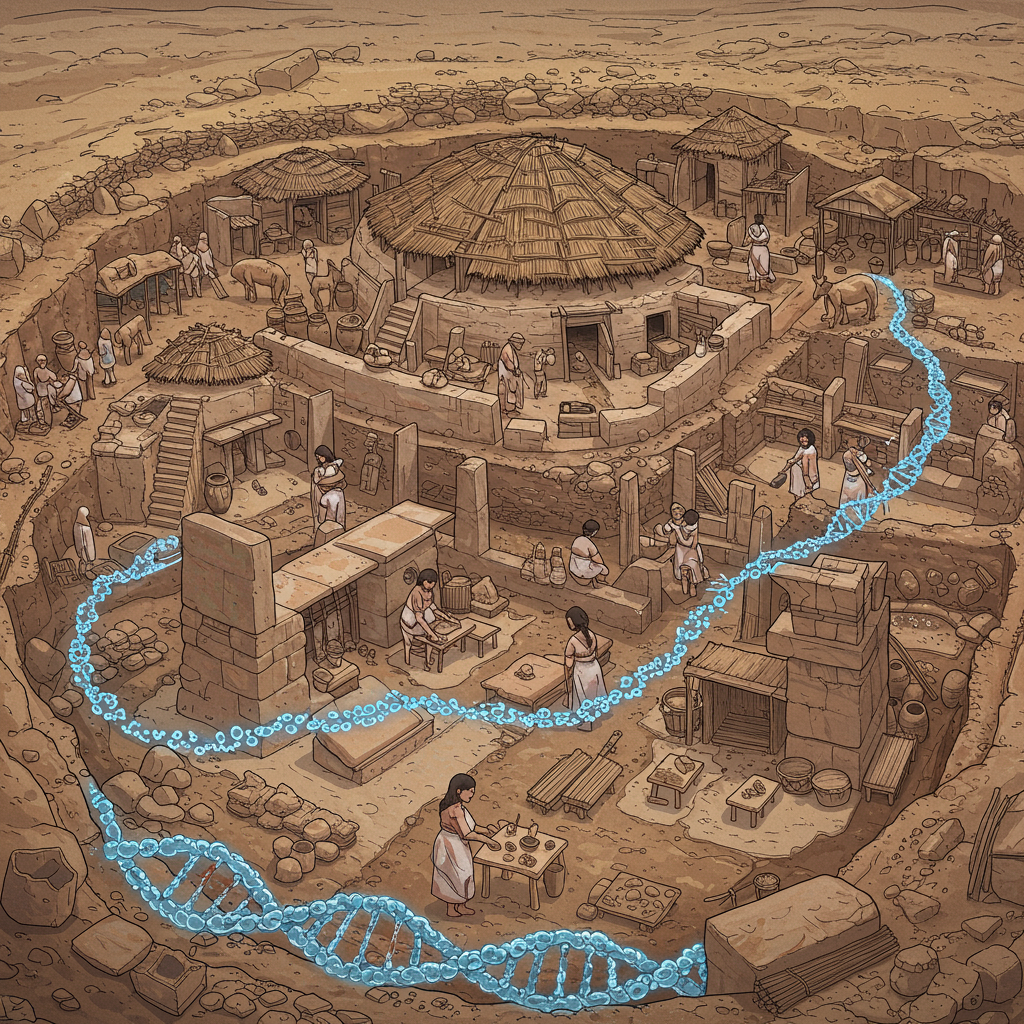Imagine knowing your biological aging rate from a single brain scan. For decades, researchers have sought accurate ways to measure the pace at which our bodies and brains are truly aging, beyond just counting birthdays. Now, scientists have developed a groundbreaking new tool that uses a standard MRI of the head to estimate this “biological age” and predict the risk of conditions like dementia and other health problems years before symptoms might appear. This early insight could potentially empower individuals and healthcare providers to intervene sooner, offering a crucial window to improve health outcomes.
Unlocking the Brain’s Hidden Aging Clock
We all age differently. Some individuals remain sharp and active well into their later years. Others experience age-related decline much earlier. This variation highlights a key question: Is chronological age the best measure of health risk?
As Duke University professor of psychology and neuroscience Ahmad Hariri notes, “The way we age as we get older is quite distinct from how many times we’ve traveled around the sun.” True biological aging isn’t just about the number of years lived. It’s about the wear and tear accumulated inside our bodies. Measuring this pace accurately has been a major challenge.
Historically, many “aging clocks” have relied on data from different age groups studied at one moment in time. This approach can confuse true aging speed with environmental or historical factors unique to a generation, like exposure to pollutants. Scientists needed a measure that tracks how fast the aging process itself unfolds within individuals over time.
Introducing the dunedinpacni Tool
Researchers from Duke University, Harvard University, and the University of Otago in New Zealand have created a powerful new metric called DunedinPACNI. This tool is designed to estimate an individual’s longitudinal pace of aging. What makes it revolutionary is its ability to derive this complex score from just one brain MRI scan.
This single scan, ideally taken around midlife (age 45 in the study), can provide a unique window into a person’s future health trajectory. The tool offers insights into the likelihood of developing chronic diseases later in life. It also helps predict who might be at higher risk for dementia and other age-related conditions long before clinical signs emerge.
Identifying these risks early is vital. It offers the potential for individuals to make significant lifestyle and diet changes. These adjustments could help them stay healthier for longer.
The Power of the Dunedin Study
The development of the DunedinPACNI tool relies on an exceptionally rich dataset. Researchers utilized information from the Dunedin Study. This ongoing project has followed 1,037 individuals since their birth in 1972-1973 in Dunedin, New Zealand.
For nearly 20 years, the Dunedin Study tracked participants’ health rigorously. Researchers measured a wide array of markers. These included blood pressure, body mass index, cholesterol and glucose levels, kidney and lung function. Even measures like gum recession and tooth decay were monitored.
This comprehensive, longitudinal data allowed scientists to calculate a precise “pace of aging” score for each participant. This score reflected the overall rate of decline across multiple health systems.
Training the Brain Scan Clock
The next step was to see if a single brain scan could estimate this detailed, multi-system aging pace. The new DunedinPACNI tool was trained using MRI data. This data came from 860 Dunedin Study participants when they were 45 years old.
The tool learned to estimate the individual pace of aging score using only the information present in the brain MRI. After training, researchers tested the tool on brain scan data from other cohorts. These included studies from the U.K., the U.S., Canada, and Latin America. The goal was to see if the tool’s findings were consistent across different populations and backgrounds.
Faster Aging Linked to Cognitive Decline and Dementia
The results from testing DunedinPACNI were compelling. Across the various datasets, individuals whose brain scans indicated a faster pace of aging showed worrying patterns. They performed worse on cognitive tests. Their brain scans also revealed faster shrinkage in the hippocampus. This is a key brain region essential for memory and learning.
More significantly, those identified as aging faster by the tool were more likely to experience cognitive decline in later years. In one analysis using a North American study of Alzheimer’s risk (involving 624 people aged 52-89), the findings were stark. Participants whose scans suggested they were aging fastest upon joining the study were a remarkable 60% more likely to develop dementia in the following years. They also began experiencing memory and thinking problems sooner than slower agers.
According to Ahmad Hariri, seeing these initial results was astonishing. He stated, “our jaws just dropped to the floor.”
Beyond the Brain: Predicting Overall Health
The DunedinPACNI score didn’t just predict brain health. It also correlated strongly with overall physical well-being. People with faster aging scores were more likely to experience declining health across their bodies.
These individuals were found to be more frail. They were also more prone to suffering age-related health crises. These included heart attacks, lung disease, or strokes. The fastest agers faced significantly higher risks. Compared to those with average aging rates, they were 18% more likely to be diagnosed with a chronic disease within the next few years.
Perhaps most concerning, the data showed a strong link to mortality. The researchers discovered that the fastest agers were 40% more likely to die within the study timeframe than their slower-aging counterparts. Hariri commented on this connection, stating, “The link between the aging of the brain and body is pretty compelling.”
Universal Patterns, Global Implications
The universality of the DunedinPACNI tool’s findings is particularly promising. The correlations between aging speed and dementia risk held true across diverse demographic and socioeconomic groups. This included participants from Latin America and groups in the United Kingdom who were non-White or from low-income backgrounds.
“It seems to be capturing something that is reflected in all brains,” Hariri explained. This suggests the tool identifies a fundamental biological process of aging that transcends specific populations.
This research arrives at a critical time. Global populations are living longer than ever before. Projections show the number of people over 65 is set to double by 2050. This extended lifespan, while a triumph, brings significant challenges. More people will unfortunately face age-related chronic diseases, with dementia being a major concern.
The economic burden of dementia is already immense. The global cost of Alzheimer’s care is projected to skyrocket, potentially rivaling or exceeding costs associated with more widespread diseases like diabetes and lung disease by 2050.
Catching Decline Before It’s Too Late
Effective treatments for conditions like Alzheimer’s have remained elusive despite massive research efforts. Most current approved drugs help manage symptoms but do not halt or reverse the underlying disease progression. A potential reason for this limited success is that interventions are often started too late. By the time symptoms are noticeable, significant damage has often occurred in the brain.
As Hariri puts it, “Drugs can’t resurrect a dying brain.” The hope is that tools like DunedinPACNI can change this paradigm. By identifying individuals at high risk decades before symptoms appear, researchers could evaluate new preventative strategies or treatments much earlier. This approach could potentially slow or even prevent the devastating effects of neurodegenerative diseases before irreversible damage sets in.
Using the tool could accelerate clinical trials. Instead of waiting years or decades for participants to develop symptoms, researchers could use the aging pace score to gauge the potential effectiveness of interventions sooner.
The Future of Personalized Aging Risk
Beyond predicting future disease, the DunedinPACNI tool offers opportunities for deeper research. First author Ethan Whitman, a Ph.D. candidate at Duke working with Hariri and study co-authors Terrie Moffitt and Avshalom Caspi, points out its value in understanding risk factors. The tool could help scientists explore why factors like poor sleep or mental health conditions might influence an individual’s aging trajectory.
Whitman stresses that DunedinPACNI is currently a research tool. More work is necessary to transition it into practical clinical healthcare applications. However, the team believes it represents a vital new method for researchers with access to brain MRI data. It offers a way to measure aging rates that goes beyond current biological clocks, such as those based solely on blood tests.
Hariri concludes, “We really think of it as hopefully being a key new tool in forecasting and predicting risk for diseases, especially Alzheimer’s and related dementias, and also perhaps gaining a better foothold on the progression of disease.” This pioneering work published in Nature Aging paves the way for earlier, more personalized approaches to combating age-related decline.
Frequently Asked Questions
How does this brain aging MRI tool work to predict dementia risk?
The DunedinPACNI tool uses a single brain MRI scan to estimate an individual’s “pace of aging” score. This score was developed based on how quickly multiple health markers changed over 20 years in the Dunedin Study participants. The tool is trained to find patterns in the brain scan that correlate with this established pace of aging. Once calibrated, a single scan can provide an estimate of how fast a person is aging biologically. A faster estimated aging pace has been shown in studies to significantly correlate with a higher risk of future dementia and cognitive decline, sometimes decades later.
What is the Dunedin Study and why was it important for this research?
The Dunedin Study is a unique, long-term research project that has followed over 1,000 individuals born in 1972-1973 throughout their lives. Researchers have regularly collected detailed health data across various body systems from these participants over decades. This extensive longitudinal dataset allowed scientists to create a highly accurate “pace of aging” score for each person based on real changes over time. This score provided the gold standard against which the DunedinPACNI brain MRI tool was trained and validated, making the tool’s predictions more robust.
Can I get this brain scan now to check my personal dementia risk?
Currently, the DunedinPACNI tool is primarily a research tool. While it has shown significant promise in predicting dementia risk and overall health decline in studies, it is not yet widely available for clinical use in healthcare settings. More research is needed to validate its use in diverse clinical populations and integrate it into medical practice. The scientists hope it will eventually become a practical tool, but for now, its main value lies in helping researchers understand aging and test potential interventions earlier.




